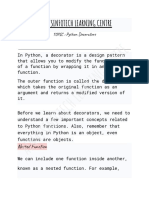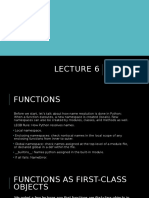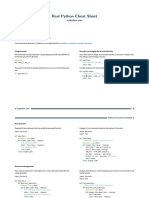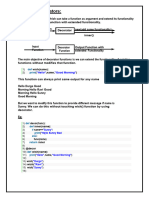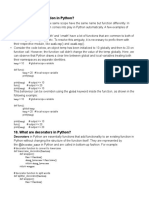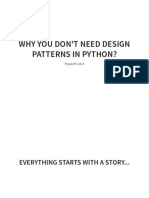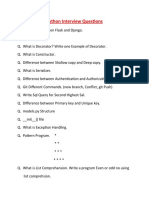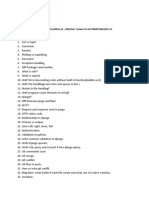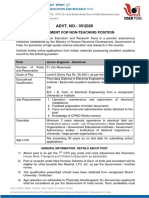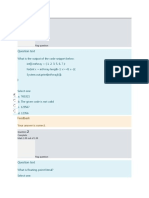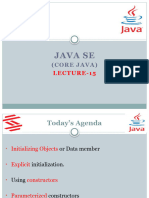0% found this document useful (0 votes)
130 views5 pagesIT15 Decorators Python Draft23
This document discusses advanced Python techniques related to decorators. It provides background on decorators in Python, explaining that decorators allow adding new functionality or modifying existing functionality of decorated functions. The document also discusses Python objects and functions, and how everything in Python is an object. It then demonstrates how decorators can be implemented using classes by wrapping the original function and adding additional behavior.
Uploaded by
amol nagraleCopyright
© © All Rights Reserved
We take content rights seriously. If you suspect this is your content, claim it here.
Available Formats
Download as PDF, TXT or read online on Scribd
0% found this document useful (0 votes)
130 views5 pagesIT15 Decorators Python Draft23
This document discusses advanced Python techniques related to decorators. It provides background on decorators in Python, explaining that decorators allow adding new functionality or modifying existing functionality of decorated functions. The document also discusses Python objects and functions, and how everything in Python is an object. It then demonstrates how decorators can be implemented using classes by wrapping the original function and adding additional behavior.
Uploaded by
amol nagraleCopyright
© © All Rights Reserved
We take content rights seriously. If you suspect this is your content, claim it here.
Available Formats
Download as PDF, TXT or read online on Scribd
/ 5


































